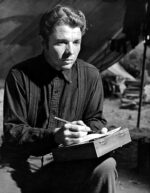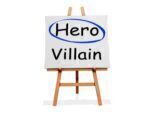 Aristotle in Poetics teaches the phenomena of tragedy and the elements of a tragic play. Applied to a personal injury case we must have a hero, who sustains adversity, does his best to overcome the adversity, but he will never fully overcome. Our client is the hero. The adversity is the injury. Treatment is trying to overcome the injury. Not being able to fully recover is permanent injury.
Aristotle in Poetics teaches the phenomena of tragedy and the elements of a tragic play. Applied to a personal injury case we must have a hero, who sustains adversity, does his best to overcome the adversity, but he will never fully overcome. Our client is the hero. The adversity is the injury. Treatment is trying to overcome the injury. Not being able to fully recover is permanent injury.
Aristotle teaches plot distinguishes great tragedy. In great tragedy plot is bigger than the hero. Plot concerns how the universe works, which is universal truth. Plot is recognized as such by the audience (jury). In great tragedy the audience sees the hero like them subject to universal truth.
According to Professor Barbara McManus, Outline of Aristotle’s Theory of Tragedy, in Poetics:
The most important feature of great tragedy is “the arrangement of the incidents:” not the story itself but the way the incidents are presented, the structure of the play. According to Aristotle, tragedies where the outcome depends on a tightly constructed cause-and-effect chain of actions are superior to those that depend primarily on the character and personality of the protagonist. Plots that meet this criterion will have the following qualities:
The plot must be “a whole,” with a beginning, middle, and end. The beginning, called by modern critics the incentive moment, must start the cause-and-effect chain but not be dependent on anything outside the compass of the play (its causes are downplayed and its effects are stressed). The middle, or climax, must be caused by earlier incidents and itself cause the incidents that follow it (causes and effects are stressed). The end, or resolution, must be caused by the preceding events but not lead to other incidents outside the compass of the play (causes are stressed and effects downplayed); the end resolves the problem created during the incentive moment. Id. (Barbara McManus).
The plot must be “complete,” having “unity of action.” By this Aristotle means the trial must be structurally self-contained, with the incidents bound together by internal necessity, each action leading inevitably to the next. The worst kinds of trials are “‘episodic [where] acts succeed one another without probable or necessary sequence.” The only thing that ties the case together are events that happen to plaintiff. Events that occur to plaintiff must have a fated connection to the universal truth. While the lawyer cannot change the facts that make up the case, he “ought to show invention of his own and skillfully handle the traditional materials” to create unity of action in the trial. Barbara McManus, Outline of Aristotle’s Theory of Tragedy in the POETICS.
The trial must be “of a certain magnitude,” both quantitatively (efficient and understandable) and qualitatively (universal significance). Today Aristotle would agree trials should be straight forward and efficient showing universal truth and significant meaning so the audience responds by implementing the universal truth.
Post Footer automatically generated by Add Post Footer Plugin for wordpress.

 Aristotle teaches tragedy is the imitation of action in life. Well-being (health) and ill-being (injury) “reside in action” with the goal of life being activity. “People achieve well-being or its opposite on the basis of how they fare.” Poetics (The Primacy of Plot). The “plot” in tragedy concerns the action and how the hero fares.
Aristotle teaches tragedy is the imitation of action in life. Well-being (health) and ill-being (injury) “reside in action” with the goal of life being activity. “People achieve well-being or its opposite on the basis of how they fare.” Poetics (The Primacy of Plot). The “plot” in tragedy concerns the action and how the hero fares. The second element of personal injury tragedy is adversity. The audience relates to a true to life, realistic, honest hero. In tragedy there must be adversity or harm to the hero. Without harm there is no reason to be concerned about our hero. The audience must see adversity and the hero overcoming it to continue his quest.
The second element of personal injury tragedy is adversity. The audience relates to a true to life, realistic, honest hero. In tragedy there must be adversity or harm to the hero. Without harm there is no reason to be concerned about our hero. The audience must see adversity and the hero overcoming it to continue his quest.  Aristotle discusses the traits of the tragic hero. The hero does not need to be an award winner or have recognized accomplishments. The key is be true to life and realistic. There is a lack of pretense. The audience needs to see the hero as appropriate to his or her position in life. There is no exaggeration, and the hero is consistent in his actions.
Aristotle discusses the traits of the tragic hero. The hero does not need to be an award winner or have recognized accomplishments. The key is be true to life and realistic. There is a lack of pretense. The audience needs to see the hero as appropriate to his or her position in life. There is no exaggeration, and the hero is consistent in his actions. Having learned from Simon Rifkind all trials are plays, I sought a theatrical formula appealing to audiences over time that mirrors a personal injury case. I found Aristotle in Poetics sets forth what has become the classic formula for tragedy and it fits a personal injury case.
Having learned from Simon Rifkind all trials are plays, I sought a theatrical formula appealing to audiences over time that mirrors a personal injury case. I found Aristotle in Poetics sets forth what has become the classic formula for tragedy and it fits a personal injury case. Beginning in law school law school I knew I wanted to be a trial lawyer. This meant studying trial lawyers. I started with Simon Rifkind. From Rifkind I learned trials are plays.
Beginning in law school law school I knew I wanted to be a trial lawyer. This meant studying trial lawyers. I started with Simon Rifkind. From Rifkind I learned trials are plays.  The elements of personal injury tragedy are: 1) Hero (honest plaintiff); 2) Adversity (injury); 3) Attempting to Overcome Adversity (necessary medical treatment); and, 4) Inability to Overcome (permanent injuries). This formula emphasizes the injured plaintiff.
The elements of personal injury tragedy are: 1) Hero (honest plaintiff); 2) Adversity (injury); 3) Attempting to Overcome Adversity (necessary medical treatment); and, 4) Inability to Overcome (permanent injuries). This formula emphasizes the injured plaintiff. Definition of tragedy includes:
Definition of tragedy includes: Having learned from Simon Rifkind all trials are plays, I sought a theatrical formula appealing to audiences over time that mirrors a personal injury case. I soon found tragedy. Research reveals Aristotle in Poetics sets forth what has become the classic principles of tragedy.
Having learned from Simon Rifkind all trials are plays, I sought a theatrical formula appealing to audiences over time that mirrors a personal injury case. I soon found tragedy. Research reveals Aristotle in Poetics sets forth what has become the classic principles of tragedy.